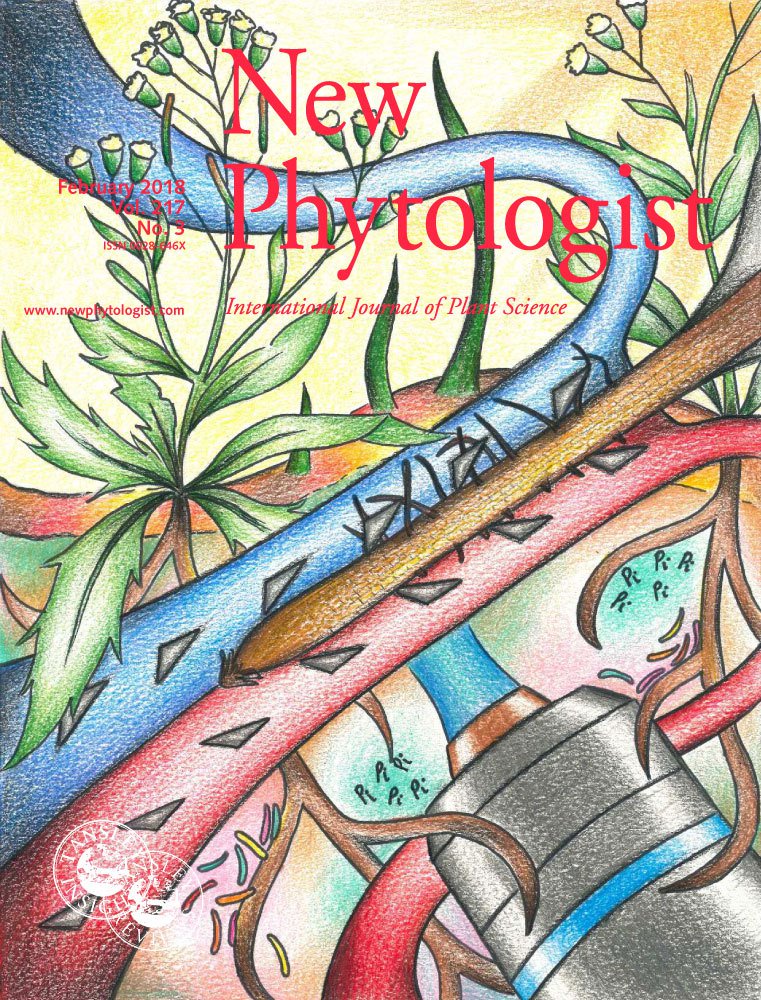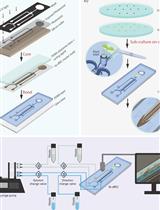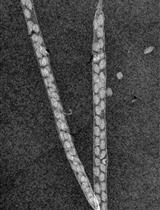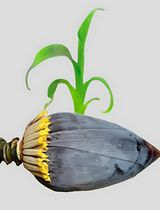- EN - English
- CN - 中文
Fabrication and Use of the Dual-Flow-RootChip for the Imaging of Arabidopsis Roots in Asymmetric Microenvironments
制造和使用dual-flow-RootChip在不对称微环境下进行拟南芥根组织成像
发布: 2018年09月20日第8卷第18期 DOI: 10.21769/BioProtoc.3010 浏览次数: 9561
评审: Tie LiuJonathan GilkersonArun Shunmugam
Abstract
This protocol provides a detailed description of how to fabricate and use the dual-flow-RootChip (dfRootChip), a novel microfluidic platform for investigating root nutrition, root-microbe interactions and signaling and development in controlled asymmetric conditions. The dfRootChip was developed primarily to investigate how plants roots interact with their environment by simulating environmental heterogeneity. The goal of this protocol is to provide a detailed resource for researchers in the biological sciences wishing to employ the dfRootChip in particular, or microfluidic devices in general, in their laboratory.
Keywords: Dual-flow-RootChip (Dual-flow-RootChip)Background
Conditions belowground are highly heterogeneous and dynamic, hence plant roots are exposed to various stimuli and consequently have to adapt to this complex environment. Despite the importance of these developmental adaptations, the underlying mechanisms still remain to be elucidated. Microfluidic devices have proven useful to cultivate specimens in controlled microenvironments and facilitate access for live imaging of dynamic processes from the subcellular to the organismic level (Crane et al., 2010). Thanks to the possibilities of microfluidics to manipulate small fluid volumes in a controlled manner, conduct experiments in high-throughput, extract quantitative information and perform time-lapse measurements, microfluidic devices have found their way into organismal studies. For the model plant Arabidopsis thaliana, a series of microfluidic devices have been developed that enable the monitoring of gene expression during root development (Busch et al., 2012), signaling events (Keinath et al., 2015) and sensor-based imaging of nutrient uptake (Grossmann et al., 2011; Lanquar et al., 2014). Additionally, more recent advances using microfluidic platforms have included high-resolution phenotyping (Jiang et al., 2014; Xing et al., 2017) and the investigation of root-microbe interactions (Parashar and Pandey, 2011; Massalha et al., 2017). While the root microenvironment can be precisely controlled in these perfusion devices, environmental complexity, a hallmark of natural root environments, was challenging to simulate (Stanley et al., 2016; Stanley and van der Heijden, 2017). The dfRootChip was therefore developed to enable the study of single Arabidopsis roots in asymmetric microenvironments at the cellular level to investigate gene expression, signaling and development (Stanley et al., 2018). Importantly, the dfRootChip can be implemented in a range of applications, which include performing localized treatments with drugs, differential nutrient or stress conditions, probing host-microbe interactions (e.g., pathogenic and beneficial interactions, potential biocontrol agents), and investigating root physiology and root hair development.
The current protocol was developed to provide fundamental know-how to researchers wishing to implement this platform. This protocol therefore provides a detailed explanation of how to fabricate the dfRootChip, using photo- and soft lithography, and how to cultivate Arabidopsis seedlings within the dfRootChip. Due to the wide applicability of microfluidics in biology, a number of steps in this protocol will also aid the fabrication and handling of other device designs. Furthermore, this protocol illustrates how the dfRootChip can be utilized in three different experimental settings. Specifically, we highlight how to perform (i) symmetric and asymmetric root treatments over longer time-periods (hours to days), (ii) localized inoculation of plant roots with bacteria and (iii) rapid asymmetric treatments with the dfRootChip. We exemplify these applications by utilizing different phosphate treatments, the bacterium Pseudomonas fluorescens and a calcium elicitor treatment respectively.
Materials and Reagents
Note: Catalog numbers are provided for commercial, non-custom-made products (see Note 1).
- Polyester film photolithography mask (Micro Lithography Services Ltd. UK, custom-made)
- 100 mm silicon wafers (Silicon Materials)
- SU8 3050 photoresist (MicroChem)
- Plastic cups (Semadeni, catalog number: 8323 )
- Plastic spatulas (Semadeni, catalog number: 3340 )
- Glass coverslips, 75 mm x 50 mm, No. 1 (Th. Geyer, catalog number: 11678524 )
- Cutting blades (Häberle Labortechnik, catalog number: 9156110 )
- Scotch® MagicTM Invisible tape (3M)
- Microcentrifuge tubes 1.5 ml (Eppendorf Safe-Lock, Eppendorf, catalog number: 0030120086 )
- Sterilised filter tips 100-1,000 μl (Pipetman Diamond Tips D1000ST, Gilson, catalog number: F171501 )
- 0.2 μm sterile syringe filters (Lab Logistic Group, catalog number: 9.055 511 )
- Sterilised filter tips 0.1-20 μl (Pipetman Diamond Tips DL10ST, Gilson, catalog number: F171201 )
- Sterilised filter tips 2-200 μl (Pipetman Diamond Tips D200ST, Gilson, catalog number: F171301 )
- 94 mm diameter sterile Petri dishes (HUBERLAB, catalog number: 7.663 161 )
- Parafilm® (Bemis, HUBERLAB, catalog number: 15.1550.01 )
- Silicone tubing (TYGON® 0.020” ID x 0.062” OD; type ND-100-80) (Th. Geyer, catalog number: AAD04103 )
- Gauge 23 dosage needles with Luer lock fitting (Gonano Dosiertechnik, catalog number: IP423050-EAR-BULK )
- Syringes 20 ml (VWR, BD PlastipakTM, catalog number: 613-3922 )
- Rotilabo-screw neck ND24 vials (Carl Roth, catalog number: LC88.1 )
- Screw caps with bore hole (Carl Roth, catalog number: LC97.1 )
- Septa Ø 22 mm, ND24, 1.6 mm, 55° (Carl Roth, catalog number: LC98.1 )
- Mini 3-way stopcock, 2 x Luer female, 1 x Luer male (NeoLab, catalog number: 270124190 )
- Male-male luer connectors (Vygon, catalog number: 893.00 )
- Polystyrene cuvettes (SARSTEDT, catalog number: 67.742 )
- 120 x 120 mm2 Petri dishes, sterile (Carl Roth, catalog number: PX67.1 )
- Aluminum foil (can be purchased from any supermarket)
- Arabidopsis thaliana seeds; lines are chosen based on individual needs
- Optional: Pseudomonas fluorescens WCS365-GFP strain (Haney et al., 2015)
- mrDev-600 developer solution (Micro Resist Technology)
- Isopropyl alcohol [(CH3)2CHOH] (Sigma-Aldrich, catalog number: W292907 )
- Chlorotrimethylsilane [(CH3)3SiCl] (Sigma-Aldrich, catalog number: 92361 )
- Sylgard 184 Kit [Poly(dimethylsiloxane), PDMS] (Biesterfeld Helvetia, catalog number: 5498840000 )
- Acetone (CH3COCH3) (Sigma-Aldrich, catalog number: 00560 )
- Sodium hydroxide (NaOH) (Sigma-Aldrich, catalog number: 71687 )
- Ethanol (EtOH) (Sigma-Aldrich, catalog number: 51976 )
- Deionised water, purified by reverse osmosis or ultrafiltration; referred to as "purified water" below
- Sodium hypochlorite 14% Cl2 in aqueous solution (NaClO) (VWR, catalog number: 90350.5000 )
- Micro agar (Duchefa Biochemie, catalog number: M1002.1000 )
- Hoagland’s No. 2 Basal Salt Mixture (Sigma-Aldrich, catalog number: H2395-10L )
- MES hydrate (C6H13NO4S•xH2O) (Sigma-Aldrich, catalog number: M8250 )
- Potassium hydroxide (KOH) (Sigma-Aldrich, catalog number: P5958 )
- Sodium chloride (NaCl) (Sigma-Aldrich, catalog number: S7653 )
- Potassium dihydrogen phosphate (KH2PO4) (AppliChem, catalog number: A3620 )
- Magnesium sulfate heptahydrate (MgSO4•7H2O) (Merck, catalog number: 1.05886.1000 )
- Potassium nitrate (KNO3) (Sigma-Aldrich, catalog number: 31263 )
- Ethylenediaminetetraacetic acid disodium salt dihydrate (Na2EDTA•2H2O) (AppliChem, catalog number: A3553 )
- Calcium nitrate tetrahydrate (Ca(NO3)2•4H2O) (Sigma-Aldrich, Fluka, catalog number: 21197 )
- Boric acid (H3BO3) (Sigma-Aldrich, catalog number: B6768 )
- Copper(II) sulfate pentahydrate (CuSO4•5H2O) (Grüssing, catalog number: 12079 )
- Zinc sulfate (ZnSO4) (Sigma-Aldrich, catalog number: Z1001 )
- Sodium molybdate (Na2MoO4) (Sigma-Aldrich, catalog number: 243655 )
- Manganese chloride dihydrate (MnCl2•2H2O) (Grüssing, catalog number: 12097 )
- Cobalt(II) chloride hexahydrate (CoCl2•6H2O) (Carl Roth, catalog number: T889 )
- Potassium chloride (KCl) (AppliChem, catalog number: A3582 )
- Luria Bertani broth (Sigma-Aldrich, catalog number: L3022 )
- Kanamycin sulfate (Carl Roth, catalog number: T832.3 )
- ½x Hoagland’s medium (½x HM) (see Recipes)
- ½x Hoagland’s agar medium (see Recipes)
- Phosphate rich medium (see Recipes)
- Phosphate deficient medium (see Recipes)
- Lysogeny broth (LB) medium (see Recipes)
- 100 mM salt solution (see Recipes)
Equipment
- Duran® laboratory bottles 500 ml (DWK Life Sciences, DURAN, catalog number: 21 801 44 5 )
- Duran® laboratory bottles 1,000 ml (DWK Life Sciences, DURAN, catalog number: 21 801 54 5 )
- Metal pins (New England Small Tube, catalog number: NE-1310-02 )
- Schott® culture tubes, 160 mm x 16 mm (DWK Life Sciences, DURAN, catalog number: 26 135 21 5 )
- Compressed air (Oil-free compressor, 9 L, 8 bar) (e.g., IMPLOTEX, catalog number: NEW-325 )
- Glass beakers (HUBERLAB, catalog number: 9.0112.43 )
- Forceps (VWR, RGS Solingen, catalog number: 232-0078 )
- Precision air regulator (Ashcroft, Ingersoll-Rand, catalog number: PR4021200 )
- 250 ml Erlenmeyer flask (Sigma-Aldrich, DWK Life Sciences, DURAN, catalog number: Z232815 )
- Spatula (HUBERLAB, catalog number: 13.1556.05 )
- Vortex (HUBERLAB, catalog number: 17.1378.01 )
- Pipettes (Pipetman classic P1000, Gilson, catalog number: F123602 )
- Pipettes (Pipetman classic P200, Gilson, catalog number: F123601 )
- Pipettes (Pipetman classic P10, Gilson, catalog number: F144802 )
- pH meter (Mettler-Toledo International, model: FiveEasyTM FE20 )
- Autoclave (Systec, model: VX-75 )
- Drying oven (SalvisLab, model: VC 20 )
- Standard refrigerator (4-6 °C)
- Biosafety cabinet equipped with UV (Kojair, model: Kojair® SilverLine BlueSeries 200 )
- Precision balance (Mettler-Toledo International, model: PB3001 )
- Analytical balance (Mettler-Toledo International, model: AB104-S/FACT )
- Spin coater (SAWATEC, model: SM-180-BM )
- Hot plate (SAWATEC, model: HP 160 III BM )
- 125 mm x 125 mm x 2 mm soda lime glass plate (Willi Möller)
- Mask aligner (Karl Süss, model: MA6 )
- Custom-made plastic chip holder (frame with an aperture for the RootChip and outer dimensions that fit the microscope stage)
- Incubator (Memmert, model: UM400 )
- Incubator with flask shaker (Eppendorf, New BrunswickTM, model: Innova® 44 )
- Wet bench with filtered laminar air flow (Goller Reinraum)
- Spin coater (Laurell Technologies, model: WS-650-23 )
- Utility knife
- Hole puncher (Syneo, model: Accu-Punch MP10 )
- Hole punch (cutting edge diameter, 0.71 mm) (Syneo, catalog number: CR0350255N20R4 )
- Hole punch (cutting edge diameter, 1.02 mm) (Syneo, catalog number: CR0500355N18R4 )
- Hole punch (cutting edge diameter, 4.75 mm) (Syneo, catalog number: HS1871730P1183S )
- Ultrasonic cleaner (BANDELIN electronic, catalog number: 301 )
- Plasma cleaner (Diener electronic, model: FEMTO40kHZ )
- Vacuum pump (Pfeiffer Vacuum, catalog number: PK D56 712 )
- Vacuum desiccator (Thermo Fisher Scientific, catalog number: 5311-0250 )
- Centrifuge (Thermo Fisher Scientific, model: HeraeusTM PicoTM 21 , catalog number: 75002553)
- Climate chamber (Panasonic, PHC, model: MLR-352H )
- Stratalinker® UV crosslinker (Stratagene, model: 1800 , catalog number: 400071)
- Syringe pumps (World Precision Instruments, model: AL-6000 )
- Stereo microscope (Nikon, model: SMZ1270 )
- Spectrophotometer (GE Healthcare, NovaspecTM Plus, catalog number: 80-2117-50 )
- Inverted microscope (any model, specific to user and application)
- Optional: source of pressurized, clean, dry air
Software
- AutoCAD Mechanical 2011 (AutoDesk, USA)
- Fiji (Schindelin et al., 2012)
Procedure
文章信息
版权信息
© 2018 The Authors; exclusive licensee Bio-protocol LLC.
如何引用
Stanley, C. E., Shrivastava, J., Brugman, R., Heinzelmann, E., Frajs, V., Bühler, A., van Swaay, D. and Grossmann, G. (2018). Fabrication and Use of the Dual-Flow-RootChip for the Imaging of Arabidopsis Roots in Asymmetric Microenvironments. Bio-protocol 8(18): e3010. DOI: 10.21769/BioProtoc.3010.
分类
植物科学 > 植物生理学 > 营养
植物科学 > 植物发育生物学 > 形态建成
细胞生物学 > 细胞成像 > 微流体
您对这篇实验方法有问题吗?
在此处发布您的问题,我们将邀请本文作者来回答。同时,我们会将您的问题发布到Bio-protocol Exchange,以便寻求社区成员的帮助。
Share
Bluesky
X
Copy link














